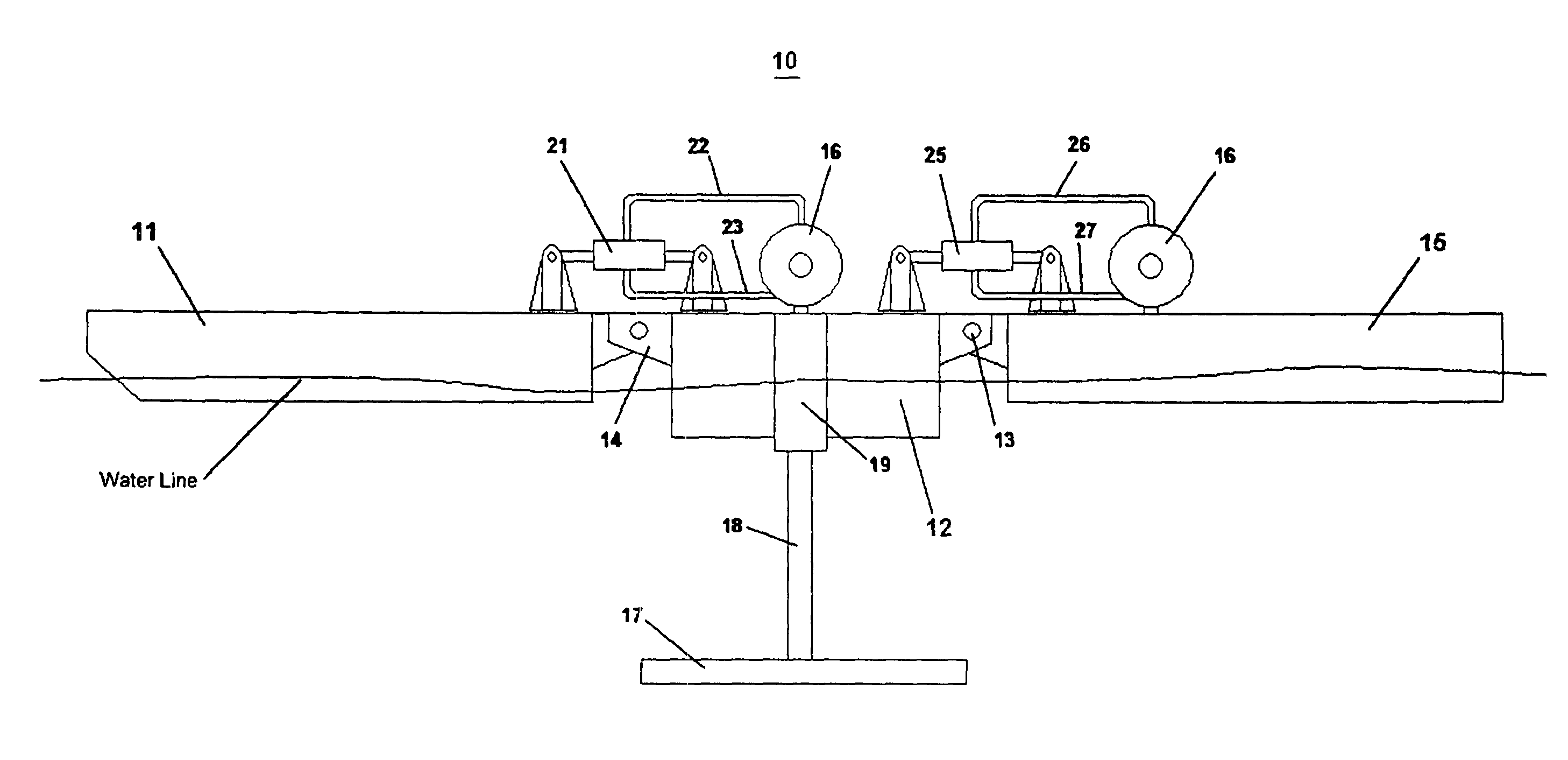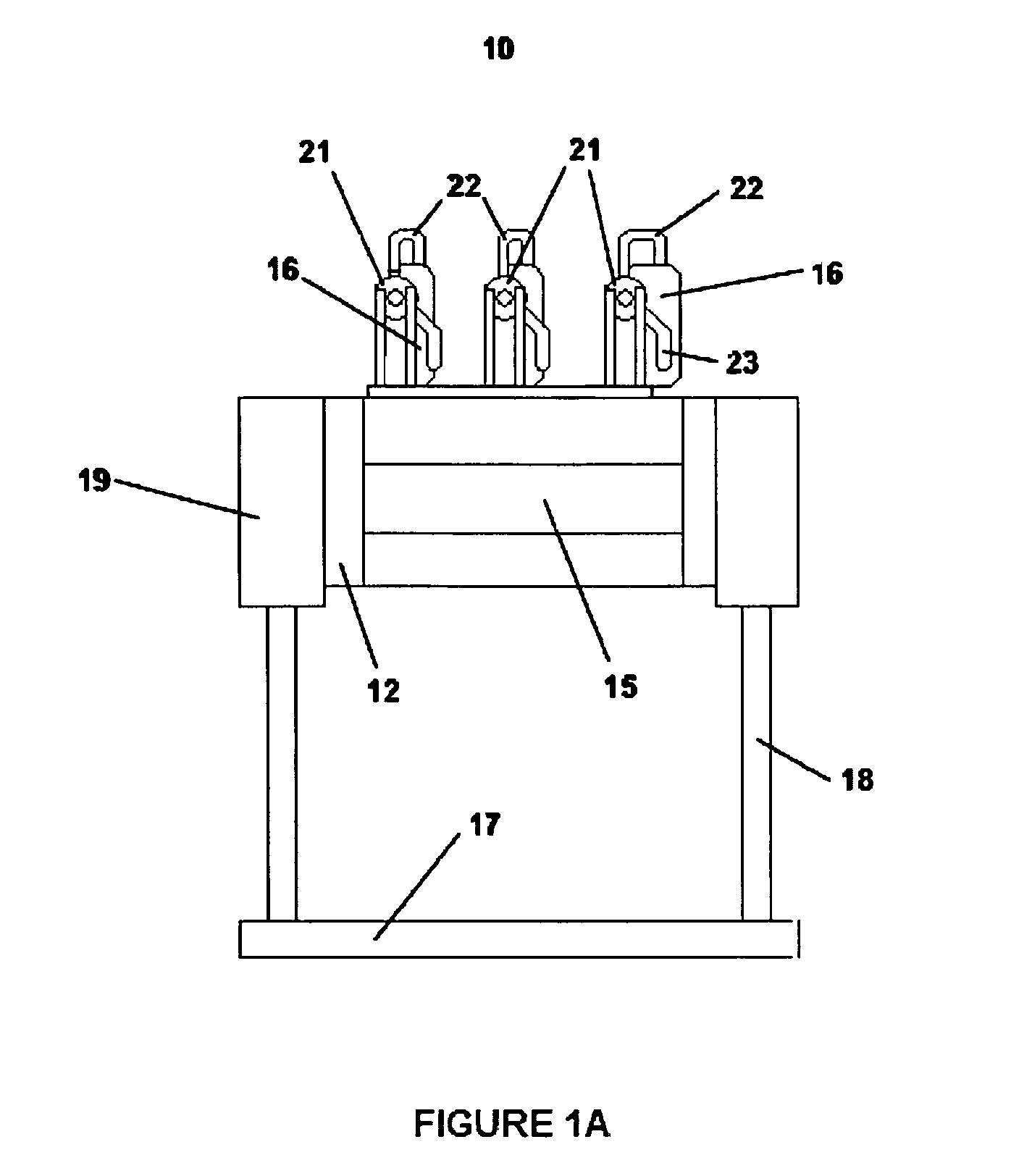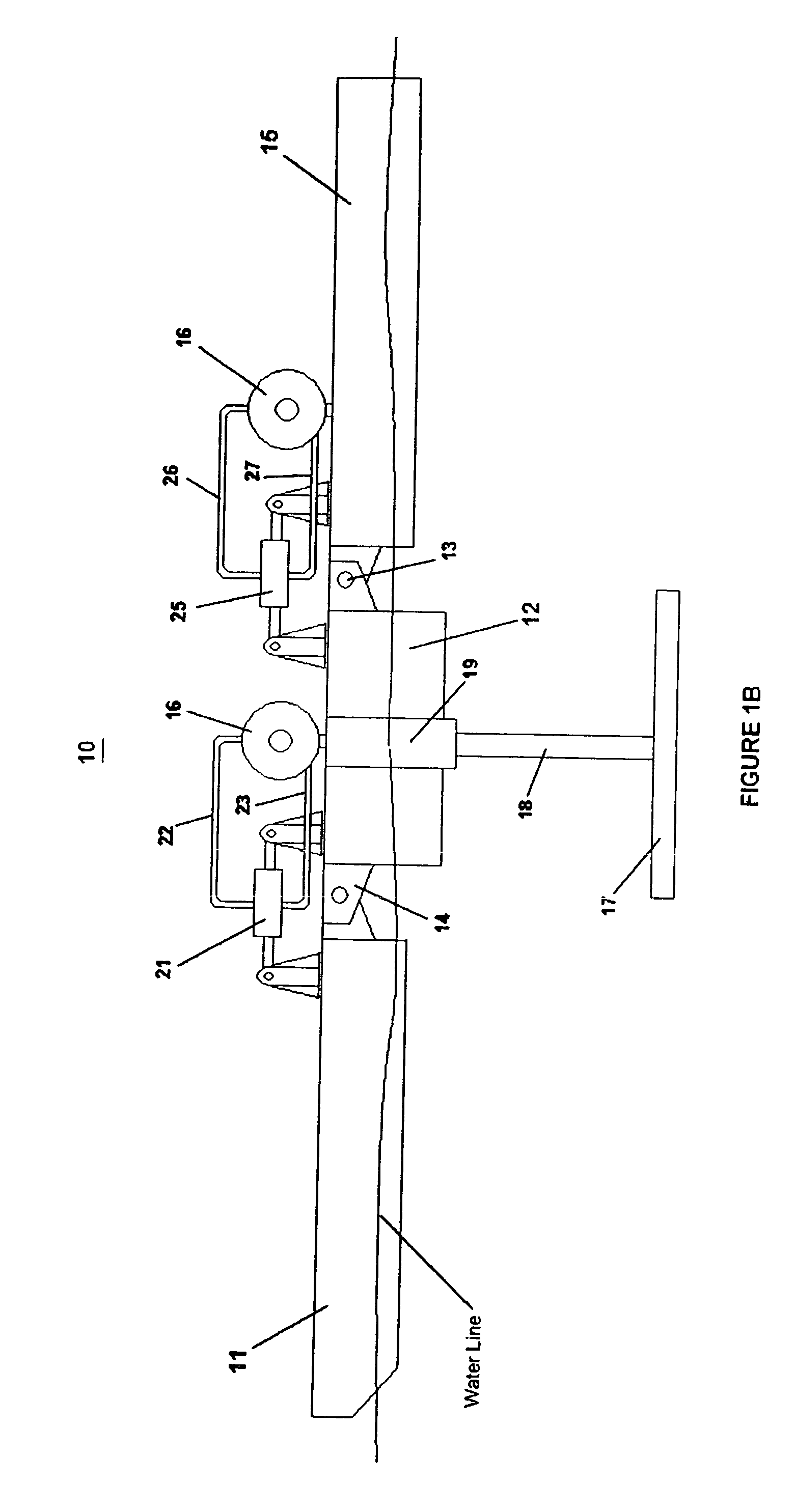System and method for renewable electrical power production using wave energy
a renewable electrical power and wave energy technology, applied in the direction of mechanical equipment, machines/engines, transportation and packaging, etc., can solve the problems of reducing the efficiency of the apparatus, the apparatus cannot be used in great depths of water, and the engineering problem is complex and difficult, so as to achieve the effect of efficiently extracting energy
- Summary
- Abstract
- Description
- Claims
- Application Information
AI Technical Summary
Benefits of technology
Problems solved by technology
Method used
Image
Examples
first preferred embodiment
[0057]In a first preferred embodiment of the invention for a system that produces electricity through the conversion of wave energy, as shown in FIGS. 1A-1C as an example, one or a plurality of barges will pitch at the frequency of the incident waves; radiated waves will then be created which result in a destructive interference of the radial and incident waves, causing focusing on the system by diffraction. Diffraction is the movement of energy in a direction perpendicular to the direction of wave travel. For example, if a wave is blocked by an obstruction, diffraction allows wave energy to fill in the “shadow” behind that obstruction.
[0058]Absorption of wave energy by a floating body (i.e., a barge) is directly related to that floating body's ability to generate a wave that cancels the incident wave. The system of the invention is intended to generate waves radiating to the front as well as the sides. This ability allows it to capture wave energy from the sides as well.
[0059]Exper...
second preferred embodiment
[0085]During periods of highly active surface waves, which can be destructive, the system may be configured to be submerged so as to prevent damage to any of the system components or subsystems, while still interacting with the wave motion or currents below the surface of the water. As is known in the art, ocean wave-energy conversion devices are naturally sited at locations that have high-energy waves. These devices are tuned to generate the most power in the wave frequencies that have the highest power, on average. However, extreme storms can create conditions that can damage the wave-energy conversion devices. Most recently, the Oceanlinx full-scale prototype off the east coast of Australia was ripped from its moorings and destroyed by storm waves in May 2010.
[0086]A novel strategy for severe weather survival of an ocean wave-energy conversion system according to the present invention embodies submerging the system when wave heights become excessive. Beneath the surface, the moti...
PUM
 Login to View More
Login to View More Abstract
Description
Claims
Application Information
 Login to View More
Login to View More - R&D
- Intellectual Property
- Life Sciences
- Materials
- Tech Scout
- Unparalleled Data Quality
- Higher Quality Content
- 60% Fewer Hallucinations
Browse by: Latest US Patents, China's latest patents, Technical Efficacy Thesaurus, Application Domain, Technology Topic, Popular Technical Reports.
© 2025 PatSnap. All rights reserved.Legal|Privacy policy|Modern Slavery Act Transparency Statement|Sitemap|About US| Contact US: help@patsnap.com



